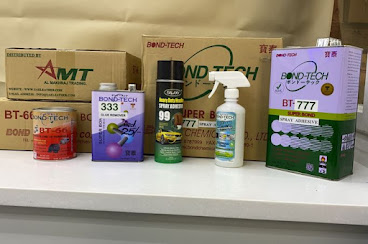When selecting the ideal solution, there are many types of adhesives, each with various requirements and uses. Adhesives can be divided into groups based on their chemical makeup, physical characteristics, classification, or load-bearing capacity. For example, A Automobiles and furniture adhesive supplier in UAE may not supply products for another industry. Therefore, the various sorts of adhesives and their uses will be covered in this article.
Adhesives made of chemicals
Here are a few illustrations of various adhesives based on the different chemical compositions.
 An example of a structural adhesive is epoxy which may be supplied by Automobile and furniture adhesive suppliers in UAE. They may be structurally bound to most materials, including metals, ceramics, wood, and plastics. They are also highly temperature- and solvent-resistant.
An example of a structural adhesive is epoxy which may be supplied by Automobile and furniture adhesive suppliers in UAE. They may be structurally bound to most materials, including metals, ceramics, wood, and plastics. They are also highly temperature- and solvent-resistant.
2. Glues made of polyurethane
Adhesives made of polymers called polyurethanes are utilized in buildings where strong bonding and long-lasting flexibility are necessary. They have diverse applications and are frequently provided as two-part adhesives. Since they need moisture to set, unlike epoxy adhesives, one can use them for jobs where other types of glue are often inappropriate.
3. Polyimide glues
One-part synthetic polymers known as polyimides typically include solvents. They are renowned for their durability, resistance to heat and chemicals, and ability to function in temperatures as high as 500 degrees Celsius. They are available in thermoset and thermoplastic forms and are frequently used for coating or electronic insulation.
How do we classify adhesives based on structure?
1. Warm Melt
Heat is used to melt hot melt adhesives into liquid form, which one can then utilize to coat entire surfaces before solidifying into a polymer. As a result, they are valued for their environmental friendliness, safety, and long shelf lives in many industrial industries. Hot melt adhesives come in a variety of forms, such as those that are pressure-sensitive, APAO-based, and EVA-based.
2. Heated melt
Reactive hot melt adhesives, as opposed to non-reactive hot melt adhesives, create more chemical connections following solidification. As a result, it leads to expanded bonding, stronger adhesion after curing, and excellent resistance to moisture, heat, and chemicals.
3. Thermosetting
The most common form of thermosetting adhesives has two parts. To achieve the necessary setting time, resin and hardener are combined. Although the resin and hardener can be used as a single component, this is less frequent because it requires cold storage. They may have a much shorter shelf life if you store them at high temperatures because it could prematurely trigger the desired reaction.
An essential characteristic of thermosetting adhesives is pot life. It describes the time a two-part adhesive may effectively bond after mixing. A product with a short pot life will harden too rapidly, giving you insufficient time to finish the task. On the other hand, a long pot life might also slow down assembly and postpone the setting time.
4. Responsive to pressure
These adhesives are low-modulus elastomers, meaning that little pressure is needed to cause them to deform and can be applied to wet surfaces. They are often purchased as tapes or labels for non-structural applications and are highly durable for light-load applications.
5. Elastomeric contact adhesives
Elastomeric contact adhesives are used to attach the two objects being bonded together. Moreover, the components are brought into immediate contact after evaporating solvent. One can find these adhesives in countertop laminates or rubber cement.
For high-quality adhesives, Rely on UAE Leather
In summary, there are numerous varieties of adhesives. Choosing the ideal Automobiles and furniture adhesive supplier in UAE for your project may be challenging due to the many chemical compositions, shapes, classifications, load-bearing capacities, and other characteristics of their products. UAE Leather provides a range of premium adhesives for various purposes. Still, it has the technical know-how to assist you in your decision-making and support your project from start to finish.



Comments
Post a Comment